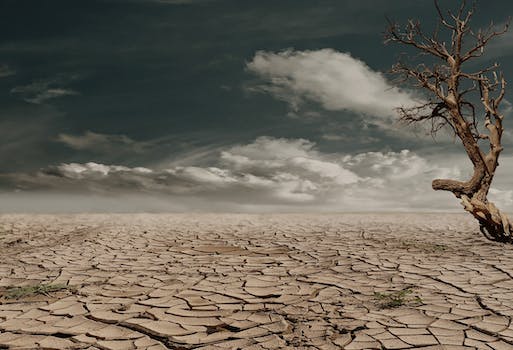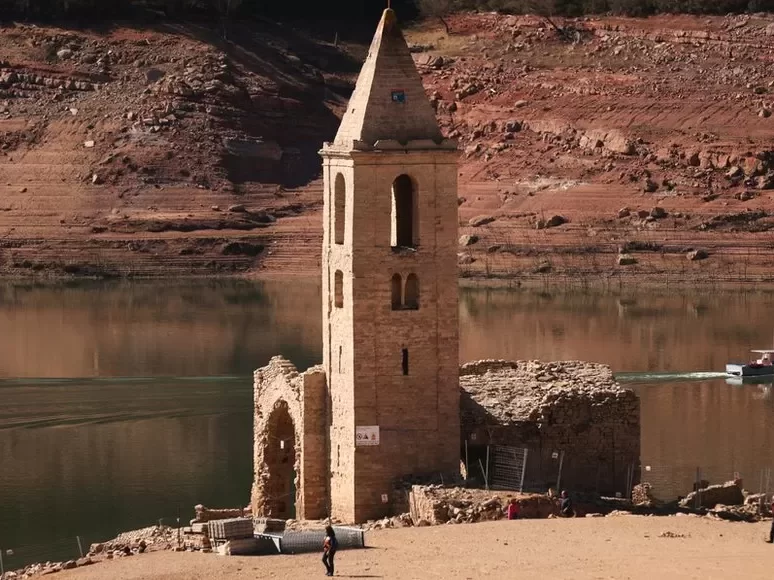"Act Now: Protect Catalonia from the Devastating Effects of Climate Change!"
How Climate Change is Impacting Catalonia's Water Supply
Climate change is having a significant impact on Catalonia's water supply. As temperatures rise, the region is experiencing more frequent and intense droughts, which are reducing the availability of water for both human and agricultural use.
The Mediterranean region is particularly vulnerable to the effects of climate change, and Catalonia is no exception. The region has experienced a decrease in precipitation of up to 20% since the 1950s, and the average temperature has risen by 1.5°C since the 1980s. This has led to a decrease in the availability of water for both human and agricultural use.
The decrease in precipitation has caused a decrease in the amount of water stored in reservoirs, which are the main source of water for the region. This has led to a decrease in the amount of water available for human consumption, as well as for agricultural use. In addition, the decrease in water availability has caused an increase in the salinity of the water, which can have a negative impact on crop yields.
The decrease in water availability has also had an impact on the region's ecosystems. The decrease in water has caused a decrease in the amount of vegetation, which has led to an increase in soil erosion and a decrease in biodiversity. This has had a negative impact on the region's wildlife, as well as on the livelihoods of those who depend on the region's natural resources.
Climate change is having a significant impact on Catalonia's water supply, and it is essential that the region takes steps to mitigate the effects of climate change. This includes implementing measures to reduce water consumption, such as water-saving technologies, and investing in water infrastructure to ensure that the region has access to a reliable and sustainable water supply.
Examining the Causes of Catalonia's Severe Drought
Catalonia, a region in northeastern Spain, has been experiencing a severe drought for the past several years. This drought has had a devastating impact on the region, leading to water shortages, crop failures, and economic hardship. In order to understand the causes of this drought, it is important to examine the region’s climate, geography, and water management practices.
Climate is a major factor in the severity of the drought in Catalonia. The region has a Mediterranean climate, characterized by hot, dry summers and mild, wet winters. This climate is conducive to drought, as the hot, dry summers lead to increased evaporation and decreased precipitation. Additionally, the region is located in a semi-arid zone, meaning that it receives less rainfall than other parts of Spain.
Geography also plays a role in the drought. Catalonia is located in a mountainous region, which limits the amount of water that can be stored in reservoirs. Additionally, the region is surrounded by the Mediterranean Sea, which has a high evaporation rate. This further contributes to the drought conditions.
Finally, water management practices in Catalonia have exacerbated the drought. The region has a long history of over-extraction of groundwater, leading to a decrease in the water table. Additionally, the region has not invested in water conservation measures, such as water recycling and desalination plants. This has further contributed to the water shortages.
In conclusion, the severe drought in Catalonia is the result of a combination of climate, geography, and water management practices. In order to address the drought, it is essential that the region invest in water conservation measures and develop strategies to reduce water usage. Only then can the region hope to mitigate the effects of this devastating drought.
Exploring Solutions to Mitigate the Effects of Climate Change in Catalonia
Climate change is a global issue that is having a significant impact on Catalonia. The region is experiencing an increase in extreme weather events, such as heat waves, droughts, and floods, as well as rising sea levels. In order to mitigate the effects of climate change, Catalonia must take action to reduce its greenhouse gas emissions and adapt to the changing climate.
Reducing Greenhouse Gas Emissions
One of the most effective ways to mitigate the effects of climate change is to reduce greenhouse gas emissions. Catalonia has set ambitious targets to reduce emissions by 20% by 2020 and 40% by 2030, compared to 1990 levels. To achieve these targets, the region has implemented a number of measures, such as promoting renewable energy sources, improving energy efficiency, and encouraging the use of electric vehicles.
Adapting to Climate Change
In addition to reducing emissions, Catalonia must also adapt to the changing climate. This includes developing strategies to manage the risks associated with extreme weather events, such as floods and droughts. The region has implemented a number of measures to improve its resilience to climate change, such as investing in flood protection infrastructure and developing drought-resistant crops.
Protecting Natural Resources
Catalonia is home to a number of important natural resources, such as forests, wetlands, and coastal areas. These ecosystems are essential for mitigating the effects of climate change, as they absorb carbon dioxide and provide habitats for wildlife. To protect these resources, the region has implemented a number of measures, such as creating protected areas and restoring degraded ecosystems.
Conclusion
Climate change is having a significant impact on Catalonia, and the region must take action to mitigate its effects. Reducing greenhouse gas emissions, adapting to the changing climate, and protecting natural resources are all essential steps in this process. By taking these measures, Catalonia can ensure a more sustainable future for its citizens.







